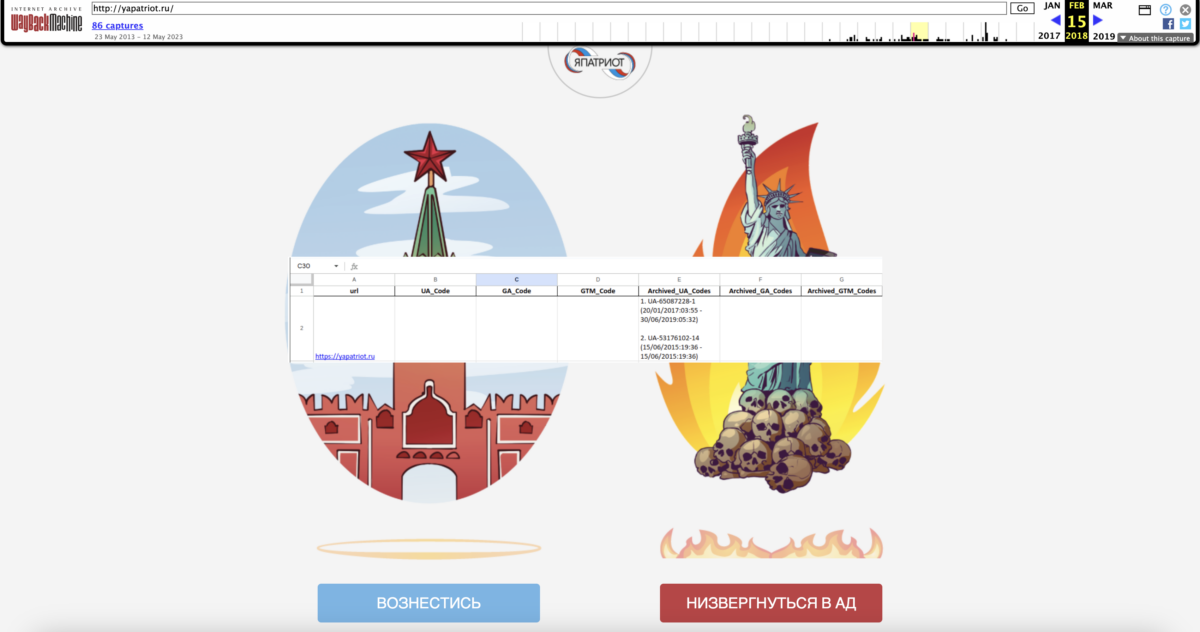Images of Syrian Civil War Take on a Second Life in Gaza Conflict
The avalanche of disinformation shared about Israel and Palestine amid the recent conflict has been well documented. Bellingcat previously reported on the surge of misattributed videos, images, and claims — which have spread across X, TikTok, Instagram, and other social media platforms.
Bellingcat has also identified a trend of footage and images from Syria’s long-running civil war being recycled and misattributed to the current Israel-Hamas conflict. This phenomenon has also been reported by other outlets including The New York Times. In particular, a number of prominent figures who have a history of denying the Syrian government’s chemical weapons attacks have re-shared Syrian civil war images, claiming they show Israel and Gaza.
Syrian President Bashar al-Assad has overseen a 12-year civil war during which forces loyal to Assad have been accused of mass murder and torture of civilians. The use of chemical weapons by Bashar al-Assad’s regime against civilians has been well documented. There is ample evidence for these acts, from witness testimony to open source material. In 2022, a German court convicted an Assad regime official of ‘crimes against humanity.’
As the current conflict between Hamas and the Israel Defense Forces has played out, prominent pro-Palestine and pro-Israel accounts have shared misrepresented footage, flooding platforms and distracting from current atrocities in the conflict.
This reuse of Syrian conflict footage means that a double erasure is occurring. Using footage from another war, rather than the evidence of Gaza today, obscures the plight of victims of both conflicts.
Russian and Syrian Regime Sympathisers Weigh in on Gaza
The Assad regime’s attacks on civilians across Syria have been well documented, including the use of chemical weapons. On Nov 15, French authorities issued an arrest warrant for Assad over his armed forces’ use of chemical weapons. Last week, a new initiative was launched at The Hague by a dozen Syrian rights groups and legal experts in an attempt to bring people responsible for using chemical weapons to justice.
However, a small but vocal group of influencers, some of whom support the Russian and Syrian regimes, vociferously deny any use by the Assad regime of chemical weapons. Some of these deniers have been vocal about the Israel-Gaza conflict and, in multiple cases, Bellingcat found that they reshared content from Syria claiming that it showed the current Israel-Gaza conflict.
While the examples below do not show chemical weapons use, they could be traced back to the Assad regime’s attacks on civilians using conventional weapons – something these influencers have also either downplayed or denied outright.
The far-right US influencer Jackson Hinkle has quickly emerged as one of the most popular users on X during the ongoing Israel-Hamas war. Hinkle has a history of spreading conspiracy theories and misinformation. Recent events have been no exception.
Throughout October, Hinkle shared several posts on X indicating not only his support for Assad, but also denying the Syrian government used chemical weapons on its own people, something which has been well documented from multiple sources. On October 10, Hinkle claimed that “Assad didn’t gas his own people.” On October 21, he also shared a picture of Assad with a caption calling him a “hero”. Hinkle further dismissed Assad’s use of chemical weapons in a post on October 22.


Meanwhile, some of the imagery Hinkle has claimed to show Palestine was actually taken in Syria. For example, on November 12, he shared an image of a woman holding a toy car descending stairs with exposed walls and damaged infrastructure. He captioned this image “You CANNOT BREAK the Palestinian spirit.”

However, this photo was featured in the Siena International photography competition in 2020. It was taken by the Iranian photographer Hassan Ghaedi, who won an award for the image in the competition’s documentary and photojournalism category. According to AFP’s Fact Check, which cited Ghaedi’s social media accounts, the image was taken in 2016 and shows a woman returning to a destroyed building in Homs, Syria. Hinkle has not yet deleted this post, archived here.


On November 1, Olga Robinson of BBC Verify reported that Hinkle had shared a video heclaimed to be footage of Gaza’s Al-Sadaqa Hospital in being bombed by Israel. This video depicted civilians in a hospital and a subsequent bombing and was also shared widely on X.
Bellingcat found an archived version of Hinkle’s original X post, which our reporter had seen, although the attached thumbnail does not display in this version.

The clip shared by Hinkle, in fact, is an excerpt from a video that shows the bombing of the Omar Bin Abdul Aziz Hospital in Aleppo, Syria from the perspective of those inside. As the Guardian reported at the time, this attack came during a 2016 surge of bombing raids by Syrian regime forces and their Russian allies. The attack on the hospital was condemned by the World Health Organization (WHO).
The video is credited to the Aleppo Media Center (AMC), a Middle Eastern Independent documentary film production company. It is one of hundreds on AMC’s YouTube channel to document attacks in Syria by Syrian government forces. The relevant scene in the hospital can be seen from timestamp 00:40.
In the recent viral version of the video shared by Hinkle, the AMC logo had been cropped out.
These jarring and often graphic posts generate great engagement for Hinkle and allow him to grow his already significant fan base. Since the start of the latest conflict in Gaza, Hinkel has made several posts advertising his social media presence, such as posting on X about how users need to pay for a subscription to his content to “expose Zionist lies.”
One of his posts on X even included a digitally edited photo of him and North Korean leader Kim Jong Un with the claim that both “stand with Palestine”. He recently tried to gain traction by posting about the highly anticipated release of the video game Grand Theft Auto 6, which he baselessly claimed was ‘Zionist propaganda’.



At the time of publication, several of the aforementioned posts by Hinkle can still be found online.
“When Hinkle used hospital footage from Syria, so many people pointed it out to him and he left it up long after,” said Muhammad Idrees Ahmad, the Director of Journalism at the University of Essex who is writing a book on war narratives in Syria for Columbia University Press, in an interview. “It was very clear what he was doing and where the cynicism comes from. These were the same atrocities he was denying in Syria and yet he’s perfectly happy to use them to condemn them by assigning them to some other perpetrator.”
The conspiracy theorist and YouTuber Maram Susli has a long history of posting pro-Assad content online. Her username on X is @Partisangirl; she also uses the name Syrian Girl. For years, Susli has denied the chemical weapon attacks by Assad’s armed forces, spread misinformation, and promoted pro-regime propaganda.
Susli appears to have deleted most of her older posts on her X account.
Since the start of the latest Israel-Hamas war, Susli has been posting and resharing misleading content that originated from Syria, claiming that it represents Gaza.
Just like Hinkle, Susli shared Ghaedi’s 2016 photograph of the woman walking down the stairs in Homs and implied that it was taken in Gaza. She added the emotionally jarring but untrue claim that this woman was searching for items to remind her of her dead child. Susli later deleted this post, but it is archived here.

The British politician and broadcaster George Galloway was a member of the House of Commons from 1987 to 2015 and currently leads the small Workers’ Party of Britain.
Galloway has spoken positively about Assad in past years (here, here). He claimed in 2013 after a chemical weapons attack occurred in Syria that, “If there has been any use of nerve gas, it is the rebels that used it”. In an X post in May, Galloway expressed happiness at Assad-led Syria’s return to the Arab League after the country was suspended from the bloc in 2011 for crackdowns on protests. Despite his staunch support of the Syrian regime, Galloway disputes the characterisation of himself as an ‘Assad apologist’.

On November 9, Galloway quoted a post on X to which he added the words ‘Do you have a heart?’ The video depicted a young boy crying, holding his recently deceased father. The original post included a Palestinian flag, suggesting that the child is a Palestinian boy.
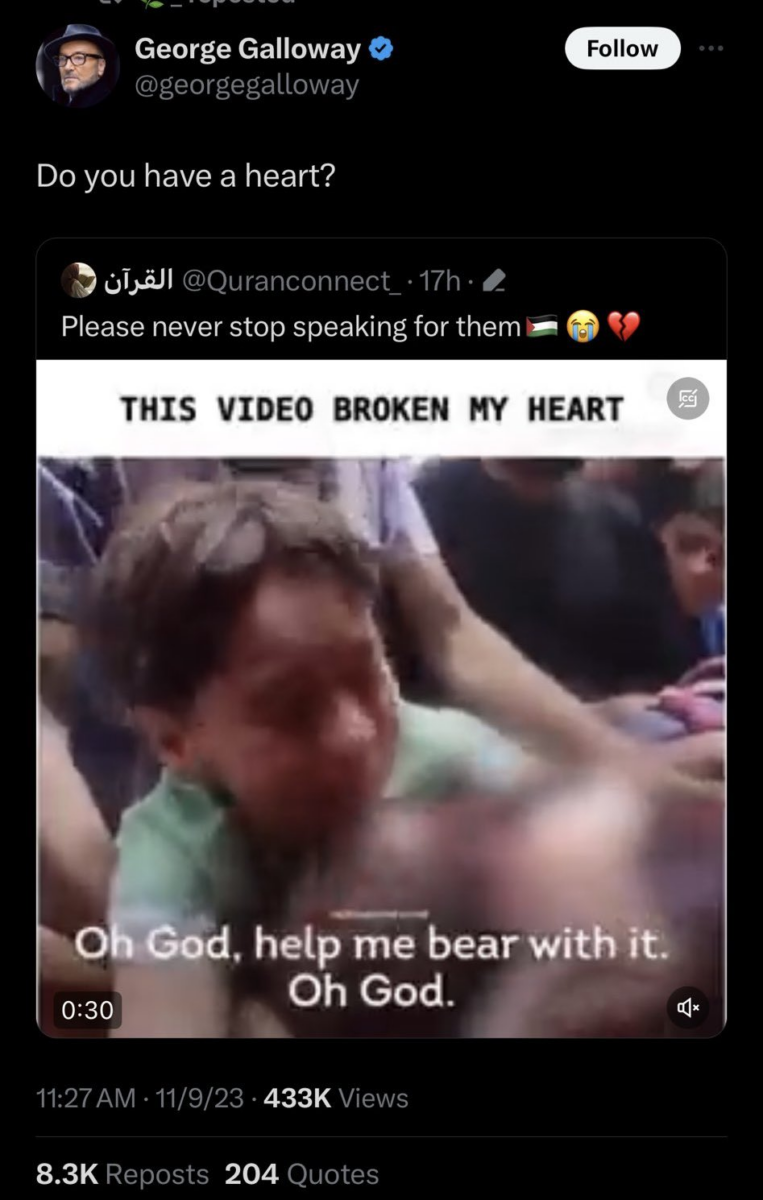
However, as pointed out by Shayan Sardarizadeh, a journalist at BBC Verify, this video was first shared on YouTube by Al Jazeera in June 2016. It actually shows the aftermath of an attack by the Assad government. We further confirmed this to be the case by using a reverse image search and searching for the name of one of the victims of the attack as given in the Al Jazeera video, Both methods led us to a photo taken by the AFP photojournalist Thaer Mohammed.
According to the photo caption, the man being mourned by his family was Fawzy Barghout. He was a member of the White Helmets, the humanitarian volunteers otherwise known as Syria Civil Defence. Barghout, continued the description, was killed by a Syrian government airstrike on the al-Sakhour of eastern Aleppo in June 2016. In both the Al Jazeera video and AFP (licensed by Getty) images, the young boy mourning his father is wearing a green shirt with white trim and Barghout is wearing a black and red striped shirt. Galloway has not yet deleted his post, which is archived here.
Children of Syria
Even beyond Pro-Assad accounts, the misuse of Syria war footage has continued across X since the latest conflict erupted in early October. In particular, there have been several videos and images shared on X misappropriating the suffering of Syrian children to spread disinformation.
For example, on October 11 a video of a young boy covered in soot crying about the death of his family was posted to X. It racked up tens of thousands of retweets and likes and millions of views. Accounts claimed that he was a Palestinian child whose sisters were killed by Israel.
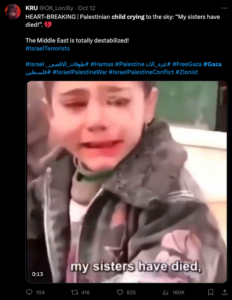

However, this video was actually of a boy in Aleppo, Syria. Like the hospital video Hinkle misleadingly shared, this video originated from the Aleppo Media Center’s YouTube page, where is was shared on April 11, 2014. The boy can be seen from timestamp 01:40.
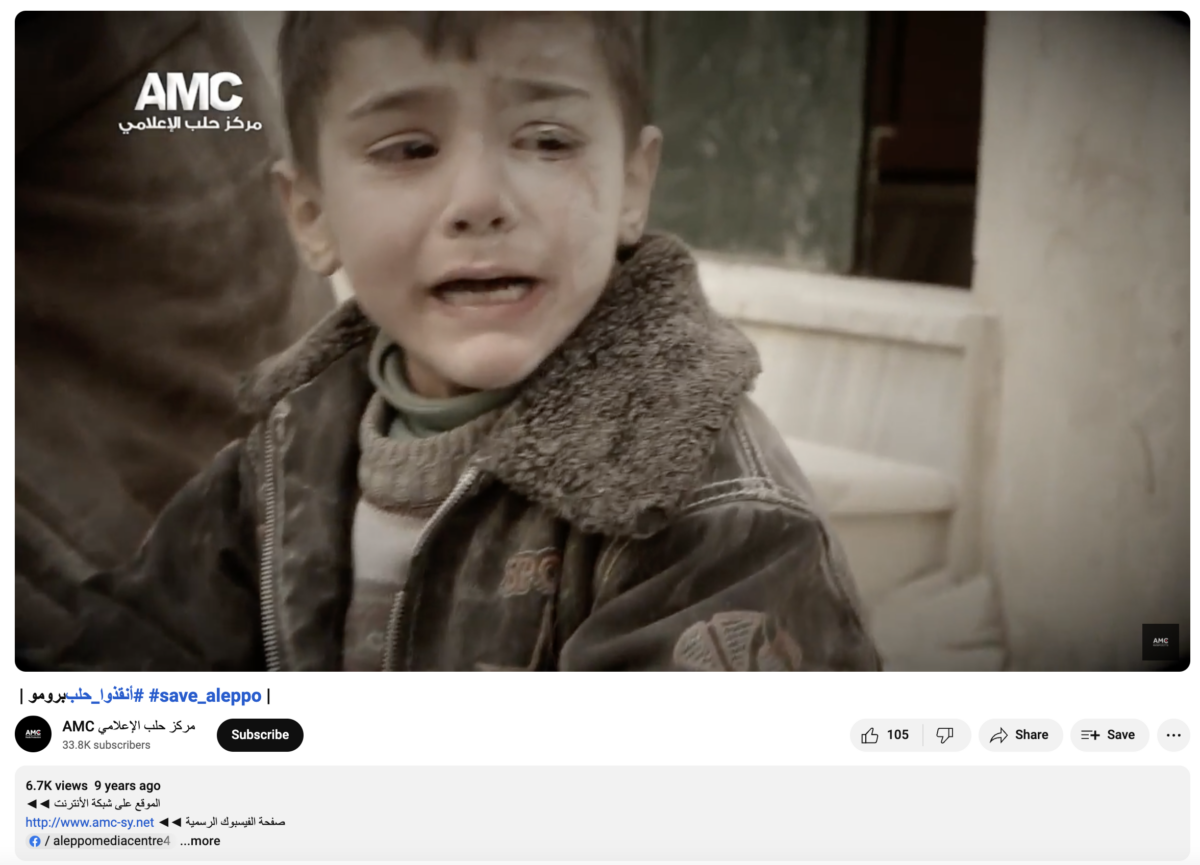
In the viral version of the video on X, the AMC logo in the top left-hand corner was cropped out. The video had been clipped down in length, and its colour tones adjusted, which aided in obscuring the original source. This was also debunked in a post on X on October 12 by Sardarizadeh, the BBC Verify journalist.
One egregious example of misuse of images of Syrian children came from Sulaiman Ahmed, a journalist and influencer with over 270,000 followers on X. Click the dropdown box below to learn more.
Caution: Disturbing Imagery
On October 14, Ahmed posted “CHILD GENOCIDE IN PALESTINE 614 Palestinian children murdered by the Israeli IOF Forces” along with a picture of several dead children shrouded in white cloth, on the ground, with their faces visible.

However, this gruesome image is not from Gaza but actually from Damascus. The photo was taken in August 2013, showing the evidence of chemical weapons attacks by pro-Assad forces as confirmed through multiple sources (here and here). In multiple articles, this photo is attributed to the aftermath of a chemical attack in Syria.
By the time of publication of this article, a Community Notes correction had been added beneath Ahmed’s post. However, Ahmed has not yet removed this misleading post, which has been archived here.
The same photo was used as a header image in stories on Syrian chemical weapons by National Geographic and United Press International (UPI) in 2013.

While UPI credits Diaa El Din as the photograph’s author, National Geographic credits Erbin News via the now defunct photo agency website Demotix. The same photo can now be found alongside other images of children’s corpses in the archives of Shutterstock, which states that these were taken in the Damascus suburb of Ghouta in 2013.
Sulaiman Ahmed also shared a video on October 13 depicting children searching for food among rubble and burnt buildings. In the post on X, he claimed that these were children in Gaza after an Israeli airstrike.

However, the original source of the video indicates otherwise. The original creator’s TikTok handle can be seen in the video uploaded by Ahmed. Thanks to this we can see that this video was posted there on June 21, well before the start of the recent war.
In addition, an Arabic-language caption on this TikTok video reads “From the Hanin Al-Minya camp fire #Syria #Lebanon #fire #camp #Emergency #Relief.” This TikTok user posted several different videos of the same area that same day, including a video showing emergency water and food supplies. A label with a Lebanese flag and the words ‘Emergency Response’ in English can be seen on the packages of food and water. The news outlet Al-Monitor reported that same day that a fire had destroyed a Syrian refugee camp in Northern Lebanon. As of publication, Ahmed has not deleted this misleading post on X, archived here.


A Toll on the Press
Throughout the current Israel-Hamas conflict, there has been a severe toll on journalists. According to the Committee to Project Journalists, as of November 27th, at least 63 journalists and media workers have been killed in the latest Israel-Gaza war since October 7.
On November 19, there were news reports of the death of two Palestinian journalists in Gaza, Hassouna Sleem and Sari Mansour.
Shortly thereafter, disinformation about murdered journalists appeared online. A video spread across X showing two men wearing bulletproof vests labelled “press”. The video begins with footage of rockets being fired behind the men before cutting to the same men unveiling rockets in the back of a truck. Users claimed that these were the two journalists killed in Gaza and that they were terrorists posing as journalists.
Among the users who shared this claim are Bree A. Dail, a correspondent for the US conservative news site Daily Wire, a user claiming to be an independent citizen journalist, and an account pretending to be an official account for Hamas.
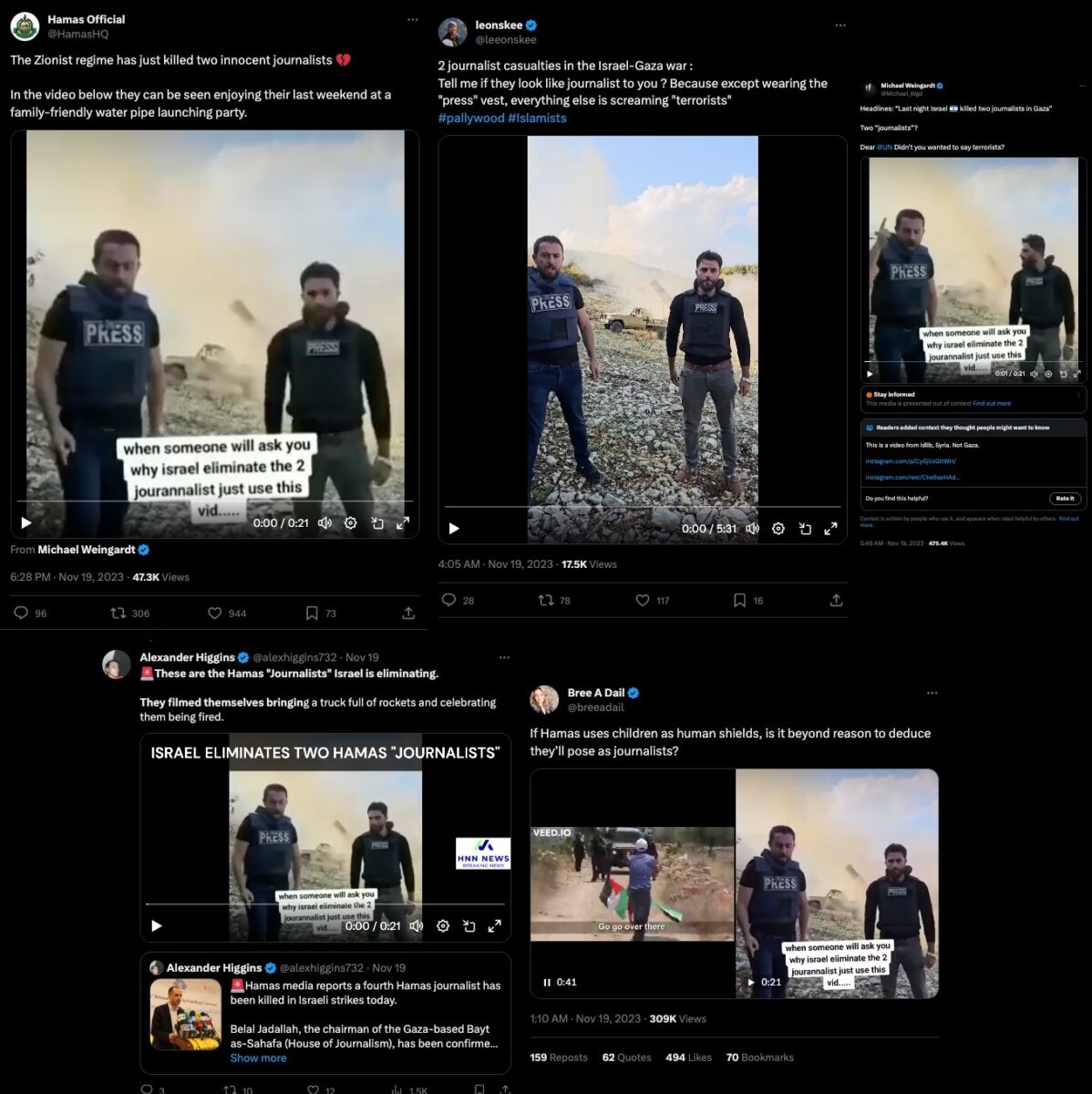
However, this video was actually filmed in Syria and was originally posted on October 7. The man on the right in the video appears to be Jamil Al-Hassan, a journalist who has reported from Syria for months.
Al-Hassan posted videos and images of the same content on his X and Instagram accounts. Al-Hassan, who describes himself as a “Media activist in the Syrian revolution” on his YouTube channel, has recently reported on retaliatory shelling by the Syrian government in early October, which Bellingcat covered here.
Al-Hassan is still posting content and there have been no reports of his death.
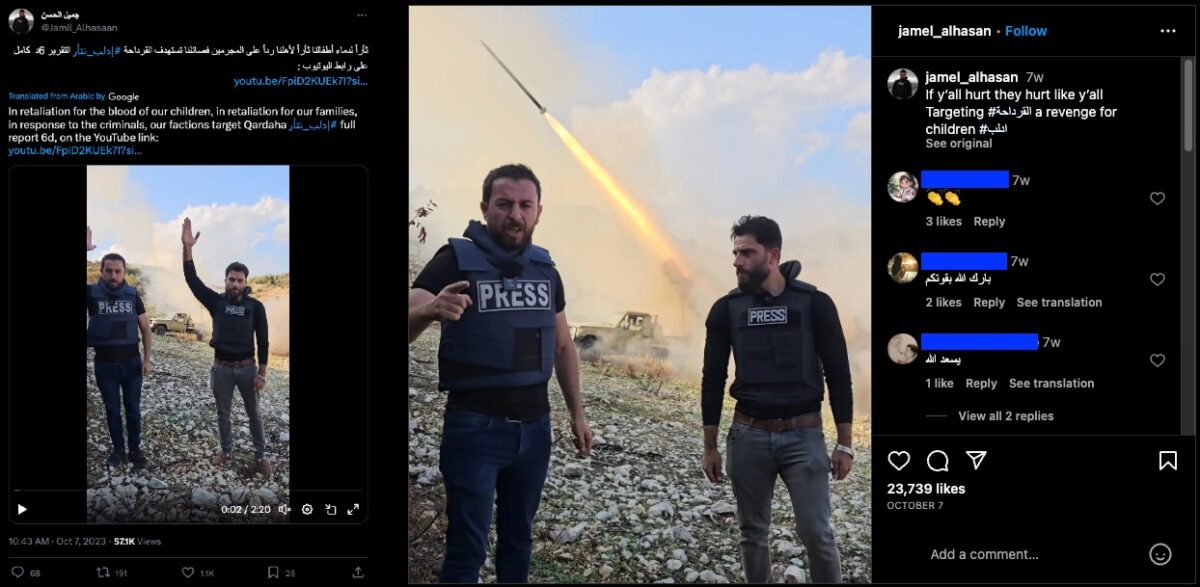
Meanwhile, actual open source evidence has played a role in investigating the killings of journalists covering the conflict, as in the case of the Reuters journalist Issam Abdallah who was reportedly killed by Israeli tank fire in southern Lebanon.
Risk and Reward
As Bellingcat has reported, there is ample genuine, verifiable open source evidence showing the large scale of civilian suffering caused by Israel’s attacks on Gaza.
“The danger in all of this is these cynical actors are handing a gift to the Hasbara crowd,” said Muhammad Idrees Ahmad, the Director of Journalism at the University of Essex who is writing a book on war narratives in Syria for Columbia University Press, in an interview. Hasbara is a Hebrew-language term referring to Israel’s ‘public diplomacy’, or pro-Israeli PR campaigns. “The fact that they are posting this out-of-context footage is being used to suggest that all the footage online, including footage of real atrocities in Gaza, is somehow dubious.”
Indeed, there is the precedent of the decades-old ‘Pallywood’ conspiracy theory which alleges that Palestinians regularly stage images of civilian suffering. Rolling Stone magazine reports that the ‘Pallywood’ charge has already been used by pro-Israeli influencers in recent weeks to dismiss evidence of human rights abuses by Israeli forces. Meanwhile, the Israeli newspaper The Jerusalem Post recently retracted a story in which it falsely claimed that a dead Palestinian baby was a doll.
Ahmad said there are two kinds of people who end up sharing Syrian footage stripped of context.
“It’s a quick way to chase clout,” he said, of the first kind. “There is a lot of legitimate anger and interest around Gaza, and there are people who are very clearly cynical enough to exploit that — even after it is pointed out to them, they keep sharing footage out of context and they keep doing it because it’s about attention.”
“The more interesting question to me is why do so many others share these posts,” he added. “People know there are atrocities happening in Gaza, and so if somebody sees footage that looks credible, where there are people being killed or pulled from the rubble to them it looks plausible. There’s no malice intended, and, in fact, one of these feeds on the other by exploiting real concern and anger.”
Bellingcat is a non-profit and the ability to carry out our work is dependent on the kind support of individual donors. If you would like to support our work, you can do so here. You can also subscribe to our Patreon channel here. Subscribe to our Newsletter and follow us on Instagram here, X here and Mastodon here.

